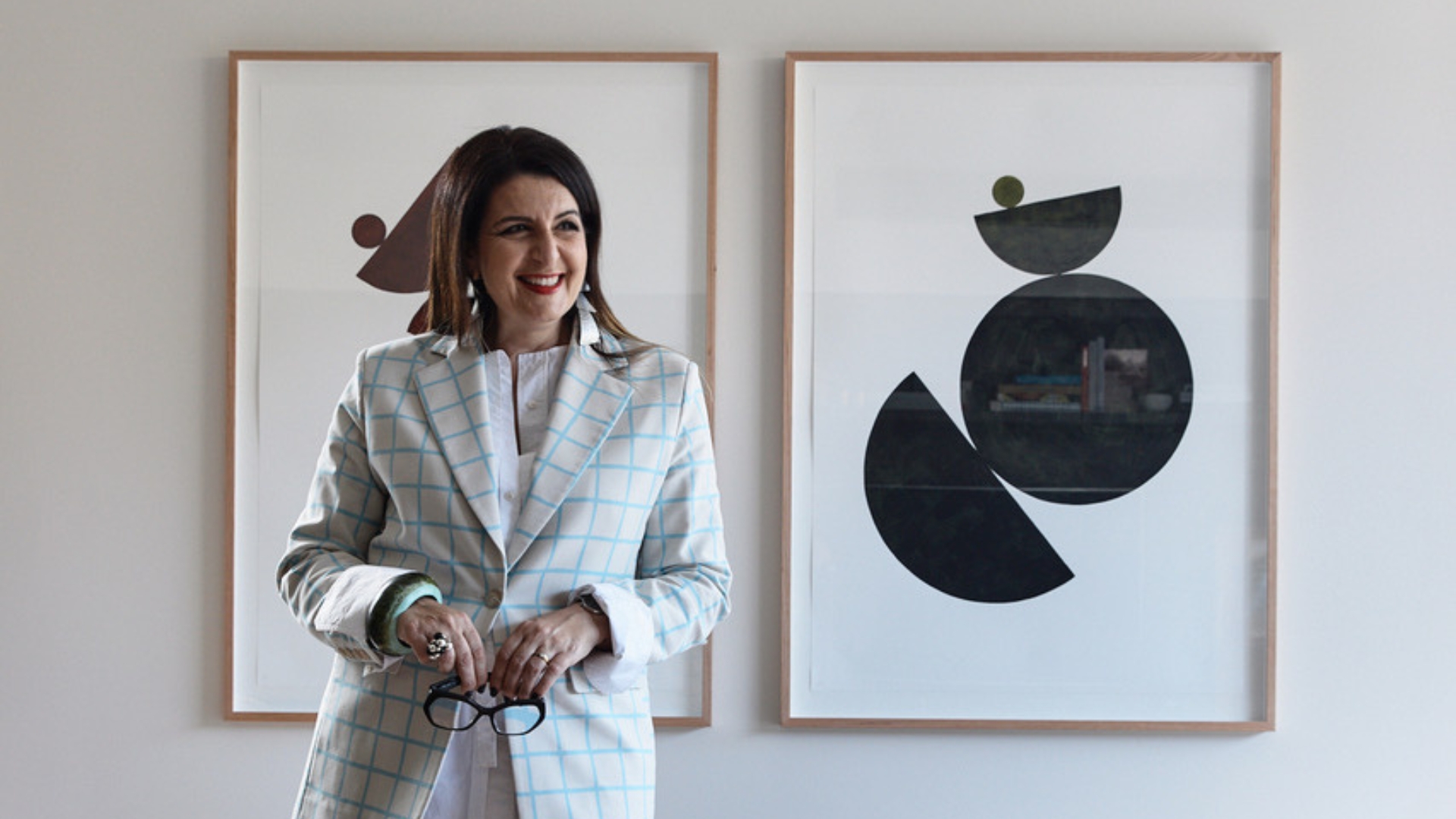A recent architectural project in Melbourne, Hellenic Homecoming, beautifully encapsulates ancient Greek tradition for elders to live with family and age with dignity.
The Greek Herald spoke with Greek Australian architect, Maria Danos, about thoughtful design for the ageing population and the Hellenic multigeneration dwelling.
The recent project would be a milestone in Maria’s architectural career, embodying the rich learnings which began when she was 10 years old.
Maria’s dad, born in Tripoli, and mum, born in Ptolemaida, Greece, met in Australia as migrants. In 1979, Maria would return to Greece with her parents, visiting their hometowns for the first time. Hiring a car, the family road-tripped for three months in summer from the south to the north of Greece.

The landscape, and the way the homes were designed in Greece, were a pivotal point in Maria’s awareness and understanding of architecture. It laid the groundwork about the importance of comparing cultures, cities and dwellings, civilisation, and societies.
“I had an awareness and perspective of otherness because my parents were from different Greek regions – not just the food and customs – but in terms of the landscape too,” Maria tells The Greek Herald.
Old enough to “get it” and young enough to have a strong impression placed upon her, the 1979 Greek summer would fulfil Maria’s curiosity – a major part of “what architects do.”
“We observe. We’re curious. We’re always asking questions, we’re trying to problem solve, we’re trying to come up with different ways of looking at things to solve a problem,” Maria says.
It was the starting point for Maria’s appreciation for art, history and architecture. Around Year 10 in school, Maria felt architecture would be her path, combining both her interests in physical sciences and artistic expression.

Maria’s parents were the greatest champions of her education and instilling strong ideals, such as giving back to the community.
“My parents loved art themselves. My dad would make beautiful mid-century furniture. He would do workshopping in the backyard and I would help him. My mum was into art and fashion,” Maria says.
“So, I was always aware of good design from a young age. It was always on my radar.”
When Maria later studied architecture in Australia, she was able to view her learnings from a young age through a formal lens. It was a crossing over of ideas and there were a lot of “ping” moments for Maria.
“We didn’t have apartment or courtyard living in Australia – this idea of multigenerational dwellings – when I visited Greece in 1979,” she says.
“In Athens, there are different generations of the family living on different floors, and there might be a central courtyard where they would dwell together after an afternoon siesta.”
In the rural areas, people in their 80’s and 90’s were living with dignity and agency in the family homes. It was very different to what Maria was used to seeing in Melbourne as a young girl.
Over the last 15 years as an architect, Maria has found a deeper understanding for the huge aging population in Australia, not just in the Greek community but across the board.

“We need to look at dignified ways of accommodating older people so they feel like valued members of the community. They have a wealth of experience. How can we be more inclusive?” Maria asks.
The Greek Australian architect designs to anticipate different dwelling needs, so that blended families can work, guests from overseas can stay, and importantly, older family members can age comfortably.
When Maria’s client, also Greek Australian, approached her with the 1920s heritage-build in Oakleigh, it gave Maria the opportunity to play with the ideas of Hellenism and what that meant in a tangible, physical way. It wasn’t about making the house look like a Greek island villa but instead looking at first impressions.
“What were my first impressions of Greece as a 10-year-old?” Maria says.
“The first time I saw textured marble, everything looked decayed but beautiful in the sense of decadence, colour, light, and texture. This is what was this project was about.”
Both Maria and her client had never met before the project but had visited Greece when they were young. Manifesting the first impressions of their homeland through materiality was how they arrived with the concept of Hellenic Homecoming.
“I always like to promote Australian material in my projects, but here was a good reason to look at Greek material,” she says.


With one leg firmly planted in one world, and one in the other, what Maria considered to be Greek forms in architecture was also manifested throughout the project. The home was transformed into a place where her client’s mother and son could live comfortably under the same roof.
“It’s not just about the way I plan a house, or apartment, or refurbish a home, it’s also the materials I use,” she explains.
“There must be a sense of warmth and texture, and friendliness. My work is not cold and clinical.”
Maria believes the aging population deserve to age with dignity. She describes the example of thoughtful placement of a window to view the outdoors and the soul warming, enriching feeling of filtered sun light coming into a home.


“We should be clever and sensitive and design with thought and consideration for everyone, for every able body to move comfortably and with dignity around their home. And to enjoy themselves,” Maria says.
“There is certainly a movement towards designing for the ageing population with thoughtfulness and with a sense of permanence… There is something to be said about good urban planning where everyone can feel connected.”
